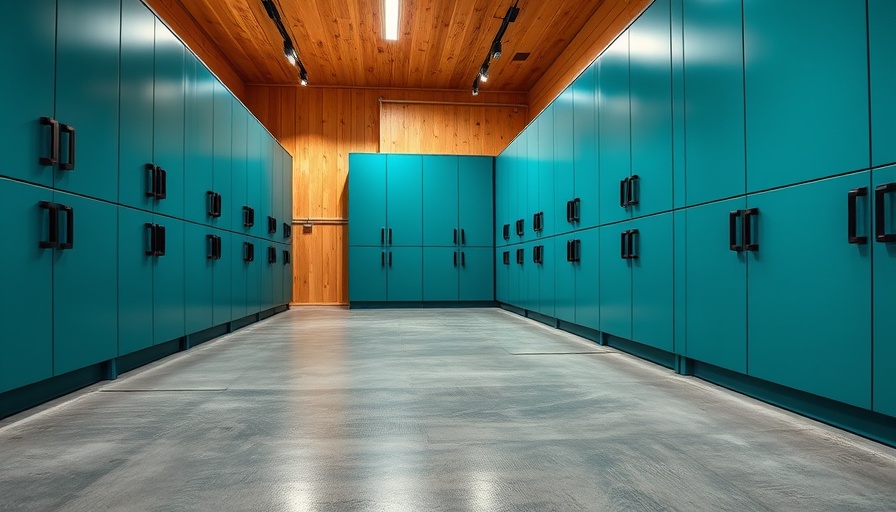
Transforming Garages: A DIY Approach to Concrete Floor Painting
For homeowners eager to revamp their spaces on a budget, painting your concrete floor can be a practical decision that yields stunning results. Whether you're renovating a garage or enhancing a basement, the transformation of a plain concrete floor can breathe new life into an otherwise dull area.
Understanding the Basics: Why Paint Your Concrete Floor?
When the authors of the original article began their garage renovations, they hesitated on whether to invest in flooring options. Initially focused on keeping costs down, they pondered sealing the floor without additional finishes. However, as they progressed in their project, an inspiring aesthetic emerged, prompting them to consider painting.
Concrete floors, when painted, not only appear more polished but can also hide imperfections like stains or cracks, making them ideal for high-traffic areas like garages. This paint serves as both a protective layer and a design element, as seen in their dilemma between achieving a beautiful blue or a more neutral shade.
A Journey Through Color Selection: The Power of Palette
Choosing the right paint color is crucial; it sets the tone for the entire room. The team was initially captivated by the idea of a transparent stain, opting for a deep blue paint that eventually proved too bold. Their lesson here? Paint is a commitment, and flexibility in color choice is essential.
After sampling various shades, from Sherwin-Williams’ Mega Greige to Illusive Green, the importance of color that complements existing decor became evident. The selected Illusive Green not only enhanced the wooden fixtures but also aligned seamlessly with the overall design scheme, emphasizing the need for thoughtful integration of color.
Practical Tips for Painting Your Concrete Floor
Homeowners looking to paint their concrete should consider several practical aspects:
- Surface Preparation: Before applying any paint, ensure the surface is clean and free of debris. Cracks should be filled to prevent further damage.
- Choosing the Right Product: Depending on usage, different paints or stains will hold up better in various conditions. Consider durability and finish where heavy foot traffic occurs.
- Test Samples: Always sample paint colors before committing to a full application. Colors can look dramatically different when spread over a large surface area.
- Consult Professionals: If you're unsure about the process, hiring a contractor for advice can save you time and resources in the long run.
Cost-Effectiveness: Painting vs. Professional Flooring Solutions
While the allure of hiring professionals to install high-end flooring is tempting, it can easily cost $5,000 or more. The authors managed to balance a cost-effective approach by opting for DIY painting, which can fit a variety of budgets. By embracing the DIY method, homeowners not only save money but also imbue their renovation with personal touches that reflect their style.
Embracing Mistakes for Growth: An Important Lesson
A key takeaway from the original experience is understanding that mistakes are part of the creative process. The choice of a jarring blue rather than the intended gray serves as a reminder that renovations often come with unexpected turns but can lead to remarkable outcomes. Homeowners can learn to embrace these challenges, leading to future projects with even more confidence.
Final Thoughts: Kickstart Your Next Project
Painting your concrete floor can transform not just your space but also your approach to home improvement. As DIY enthusiasts, homeowners can find pride in their ability to tackle projects that enhance their living spaces. With the right tools, planning, and insights shared in this article, readers are encouraged to embark on their own floor painting journey.
 Add Row
Add Row  Add
Add 




Write A Comment